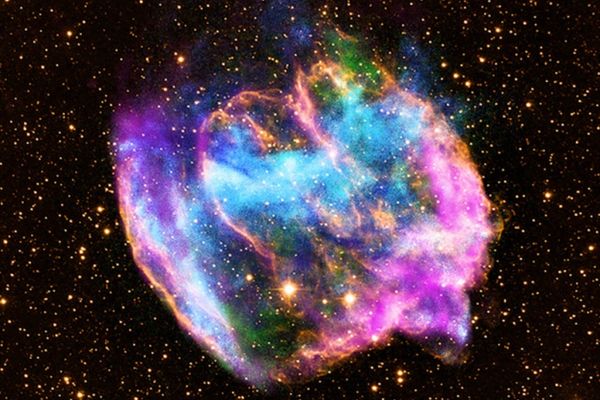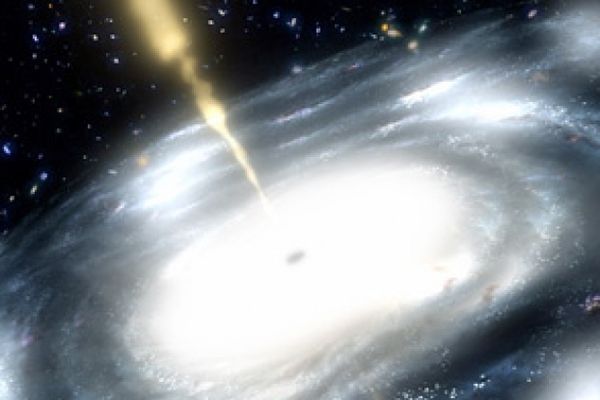
Key Takeaways
- Without stars, humans would face technological disadvantages in calendar setting, navigation and science, impacting developments from agriculture to physics.
- The absence of stars and celestial navigation would alter human migrations, political landscapes and trade routes, leaving some regions isolated and changing the dynamics of global power.
- A starless sky would lead to significant shifts in cultural development, trade dominance and the rise of different global powers.
Immediate follow-up question: What if there were no life in the universe? The sun, after all, is a star. No stars, no sun, no life.Well, if you stumbled across this starless, lifeless universe, you'd find yourself floating through a frigid expanse of nothingness wishing that you had brought a warmer coat. Decent burritos would be harder to find. Every once in a while a neutrino would blip into or out of existence.
So let's revise the question: What if there were no visible stars? We'll say the sun and planets still exist, but for some reason no extrasolar stars can be seen from Earth. Let's say this is because our solar system is surrounded by a dark nebula. Nebulae are large clouds of dust and hot gas, and usually they're in the process of coalescing to form stars. As such they're very bright, but occasionally a cloud of interstellar dust will be thick and cold enough to block visible light without giving off much light itself.
Advertisement
We'll operate under the assumption that our sun developed normally but that we drew an unlucky galactic poker hand, and our solar system is positioned inside a dark nebula. Just as life was developing on Nebula Earth, the solar system began drifting into a dust cloud, and the stars started to dim. As the dust became thicker over the next few million years, the night sky grew darker and darker until, on the night that the first brave little lungfish wiggled onto land, the sky was almost completely black. Only a few red smudges from the last, brightest stars to shine through the nebula remained in the night sky. By the time humans bothered to look up, all they saw was a moon and the planets in the darkness.
Humans on Nebula Earth are at a technological disadvantage. Throughout our history we've been using the stars for setting up calendars, navigating, knowing when to plant crops and developing science, especially physics. The ability to predict the motion of the stars was a big source of authority for priests in ancient Egypt. Without a divine mandate, priests on Nebula Earth have a harder time persuading anyone to help build the pyramids.
But it would be difficult to predict the broad effects of so many technological limitations. So let's focus on a single aspect: celestial navigation.
Early European sailors on Nebula Earth can cruise around the Mediterranean Sea if they keep the coast in sight. It's fairly easy to tell which direction you're headed with a sundial and a compass, but at night it's nearly impossible to determine your position without the stars for reference. Out of sight of land, sailing gets more dangerous — a single storm scrambles any sense of your position. Travel over the open sea is next to impossible, as any sea voyage that takes more than a day has a margin of error that grows every day as the bearing becomes more and more inaccurate.
With no advanced seafarers, all significant human migrations on Nebula Earth occur over land. Australia, the Americas and Greenland, which were settled by land migrations when sea levels were lower, are inhabited but remain isolated well past the time that they were colonized by Europeans during our history. Other islands that were settled using celestial navigation, such as New Zealand, Iceland and Hawaii, are empty of humans. While they're technically reachable by ship, sailors who stumbled on one of these islands would never be able to find their way back — if they ever made it home.
Without sea migration, Nebula Earth's political landscape is dramatically different from real Earth's. European expansion is hamstrung. Left to themselves, the Aztec and Inca, two of the most technologically advanced societies in the Americas, become the most powerful states in the Western Hemisphere. Across the Atlantic Ocean, countries such as Britain, France and Spain that pursued aggressive colonial expansion during the age of sail are never able to build and maintain colonies far from home. States in India and China, which were colonized or economically dominated by Europeans on real Earth, maintain their independence.
Here's where Nebula Earth starts to get really politically interesting. Without sea navigation, overseas trade is restricted. Small merchant ships cruise the Mediterranean, allowing trade between Europe and the Middle East, but the greatest source of international trade is the Silk Road, a long network of trade routes beginning in Constantinople that stretches across Central Asia to India and China.
On real Earth, caravans moved back and forth along the Silk Road trading silk, precious stones and spices for thousands of years. On Nebula Earth it becomes the most important (and possibly only) major trade route in the world. Any nation that controls a significant portion of the route quickly becomes wealthy, but it's also a target for bandits and vulnerable to conquest from powerful neighbors. And most of the land along the road is barren and difficult to settle, making it hard to hold on to. Just as in our own history, parts of the Silk Road change hands often. Major players over thousands of years are the Greeks, Turks, Han Chinese, Mongols, Persians, Scythians and other nomads of the Central Asian steppes.
As it did in the real world, the route changes hands among historical empires as China and India trade indirectly with a weakened Europe, sometimes through the Islamic world and sometimes through Central Asian horse empires. In eastern Central Asia, the Manchu-Chinese conquer the remains of the Junghar steppe empire, and Russia expands through westward colonization and conquest. Russia and China officially set their borders with each other in treaties signed in 1689 and 1727, each demanding control of international trade in their domain.
Here's where our histories diverge. On real Earth, the Russian-Chinese treaties destroyed the economy of Central Asia. Peripheral countries, seeking to avoid a monopolized trade, found alternative routes, mainly through maritime trade and British colonies in India. Trade along the Silk Road ground to a halt, damaging the economies of both China and Russia [source: Beckwith]. On Nebula Earth, however, this overseas trade isn't an option. For Europeans, there is no trade with the New World to offset the economic damage of the Silk Road closing. There's no littoral zone — on the water, close to shore — trade-route system to reach the East. There are no sugar plantations in the Caribbean, no European-controlled silver mines in the New World and no slave trade across the Atlantic.
Maybe Russia becomes the dominant force in an impoverished Europe. China, free from European incursions, expands its territory east into Japan and south into the islands of the South Pacific to control the spice trade, possibly even colonizing Australia. Meanwhile, India grows richer and more powerful, as the rest of the world attempts to bypass the Russo-Chinese trade monopoly. As Nebula Earth enters the 20th century, western and northern Europe remain cultural and economic backwaters under the dark night sky. There are no world wars, or at least none led by European countries, but Russia, India and China are dominant global powers. In Africa, Somalia and Ethiopia form an increasingly important overland economic and cultural hub between Europe and India. And far across the oceans, an undisturbed North and South America await contact with a new and unpredictable Old World.
Advertisement

